This month’s itinerary will take us to the sunny coast south of Barcelona, Costa Daurada.
Once there, you’ll be cycling through charming villages and olive oil plantations, staying in a beautiful rural house, and hiking with Mediterranean sea views.
So, grab a pair of hiking shoes and some comfy clothes, and let’s go!
Suggested itinerary in Costa Daurada
Morning day 1 🚲
Start the day by jumping on a bike to discover the Olive Oil cycling route, a circular route that will take you through a landscape strongly dominated by the cultivation of olive trees.
Make sure to grab a backpack because you will likely end up buying a bottle of oil or some of the other delicious products in the local stores along the route!
The itinerary starts at Montbrió del Camp, a charming rural village with a relaxed atmosphere. If you need to rent a bike, you can do so at Montbike, where you can also enjoy delicious coffee and breakfast before hitting the road.
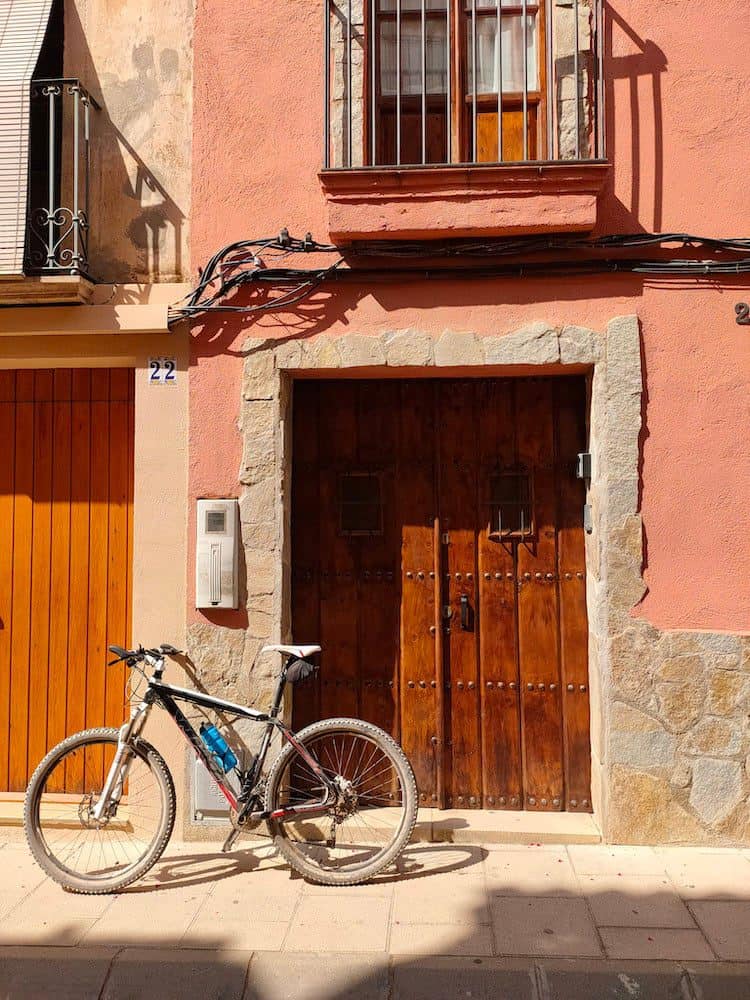
The route goes through seven villages known for being olive oil producers: Reus, Riudoms, Montbrió del Camp, Vilanova d’Escornalbou, Mont-Roig del Camp, Cambrils and Vinyols i els Arcs.
Between the villages, you’ll find fields of hazelnut, carob and olive trees, and you’ll see both mountains and the sea! Amazing, huh?!

Before reaching Cambrils, make a quick stop to grab some food you’ll need to make dinner. Yes, you’re cooking tonight!
The route passes through the Agricultural Cooperative of Cambrils, a big shop with many delicious products.
There, you’ll find local and gourmet products to prepare an excellent dinner. Make sure to get there before 8.30 pm (Monday to Saturday), or else you’ll find it closed.
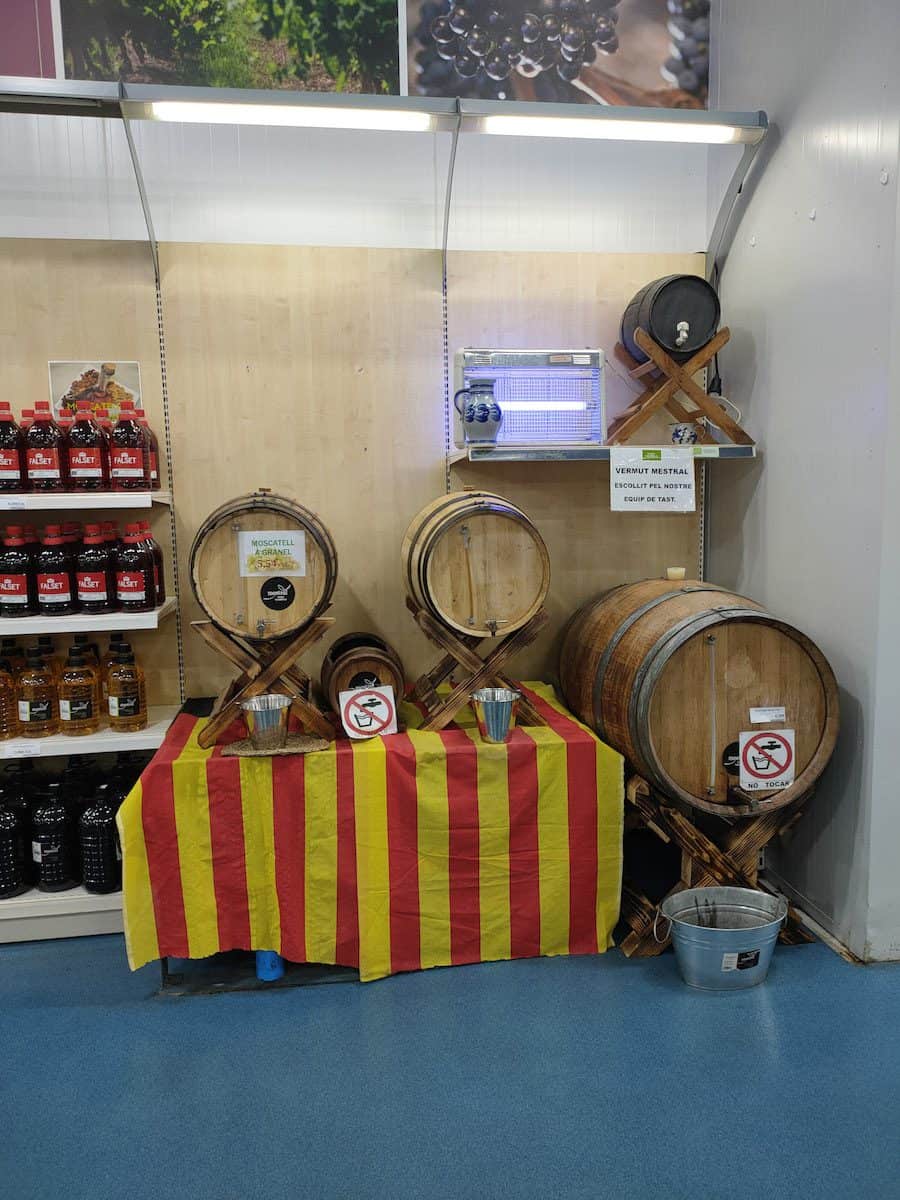
If you’re not a fan of road cycling and you’re afraid of the cars passing by, no worries! 95% of the route passes through rural roads.
Although the route is signposted, there’re some parts in which it can be tricky to find the signs. You can follow our Wikiloc track to not get lost.

To learn about the Olive Oil route in detail, check our blog post explaining the various sections, the buildings/shops/cooperatives you can visit, and the shortcuts you can take if you don’t want to cycle the whole length of the route.
The route is 49 km, so it will probably take you most of the day. Grab something to eat at any of the villages along the way whenever you’re hungry.
And after the 49 km loop, you’re back at the starting point, Montbrió. You made it!
Afternoon day 1 🍃
Next destination? Ca La Raimunda, your accommodation for the night. There, you can enjoy a much-deserved shower after all the effort made!
Ca La Raimunda is one of those places you fall in love from the moment you step in. It’s a fully restored rural house, which maintains the charm and warmth of the stone walls and wooden beams but with all the comforts of today. The owners have taken the time to care for every detail, and the love and effort to make you feel at home can be felt immediately.
Spend the evening chilling, playing board games, reading on the beautiful big terrace, or enjoying a glass of wine in the house’s cosy cellar.
Is your stomach already roaring? Then, it’s time to prepare the delicatessens you’ve bought before and enjoy a lovely dinner al fresco or in the big dining room!
Morning day 2 🥾
Had a good sleep? Great! It’s time to enjoy breakfast and get some energy for the hike ahead.
You can get some breakfast at Art i Pa, a local bakery only 8 min walking from the house, and enjoy it on the terrace while soaking up the first rays of the sun!
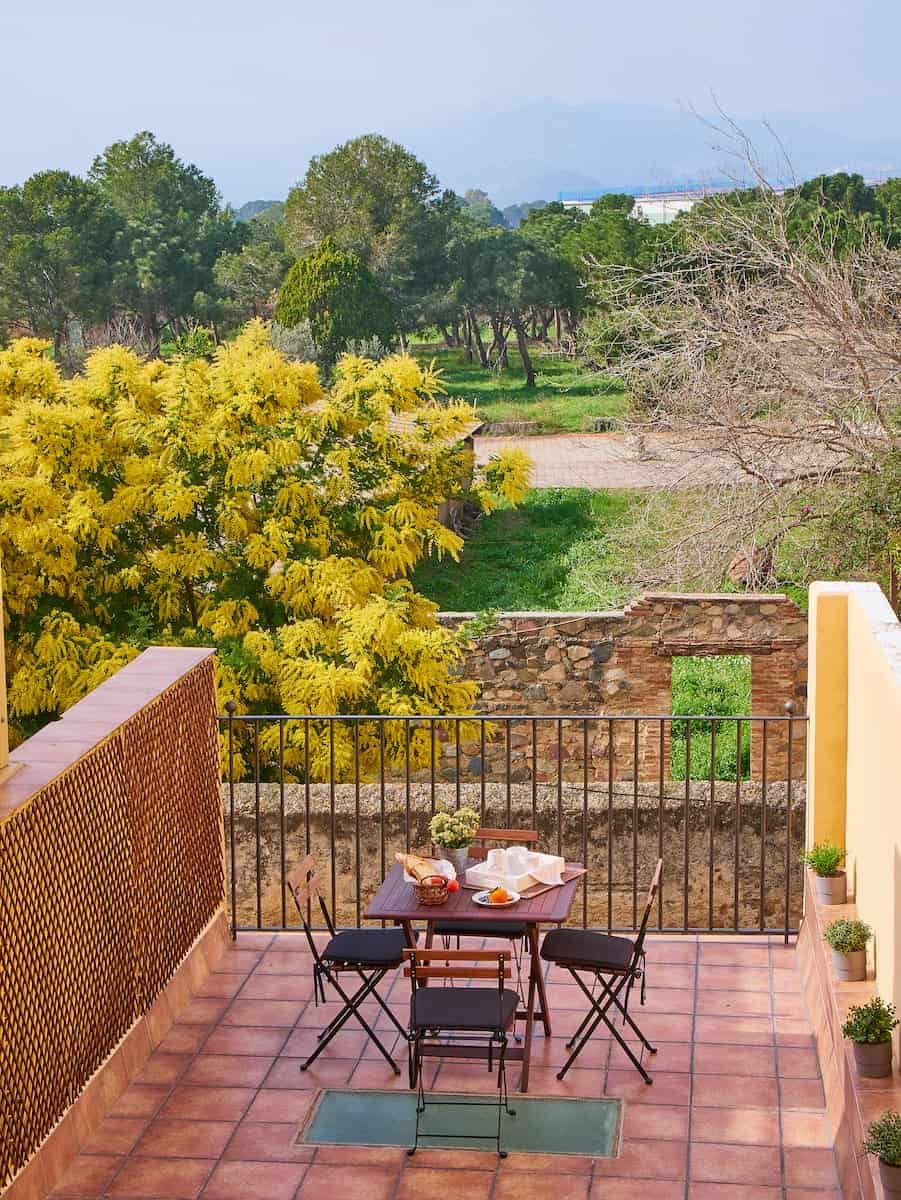
Today’s hike starts at Mont-Roig del Camp, and it’s approximately 7.5 km.
The first part unwinds through a dried ravine known as Barranc de la Mina de les Nines. It’s a hidden magical place with stone bridges and lush vegetation, usually only frequented by locals.
But the beauty doesn’t end here. After half an hour of walking through exuberant vegetation, you’ll spot a church on top of a rock. This is your next stop: the Ermita de la Mare de Déu de la Roca.
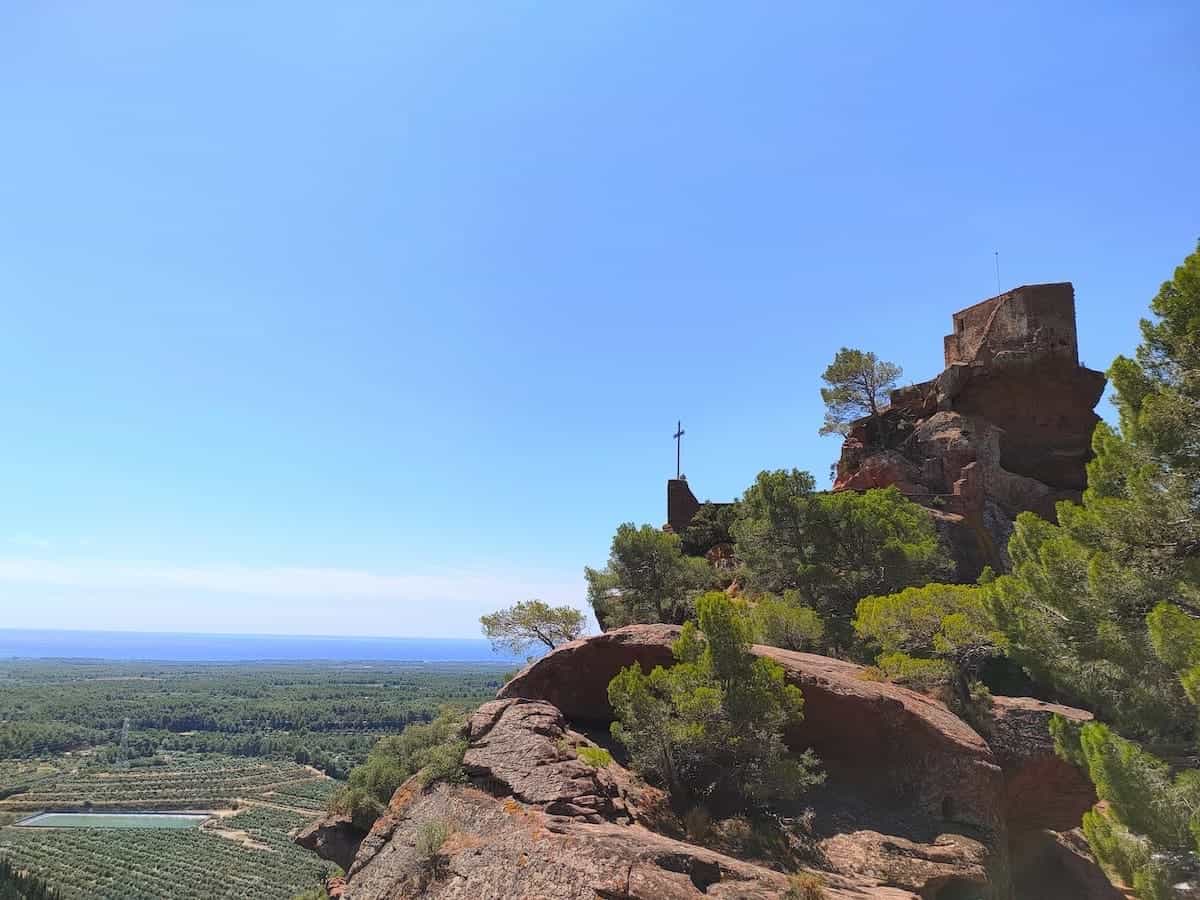
It’s a church from the 13th century built on an impressive red rock. A short climb will take you there, and we guarantee the climb is 100% worth it! The views from the church are mind-blowing.
Once there, take a break and admire the red rocks, the green olive tree plantations, and the Mediterranean Sea.
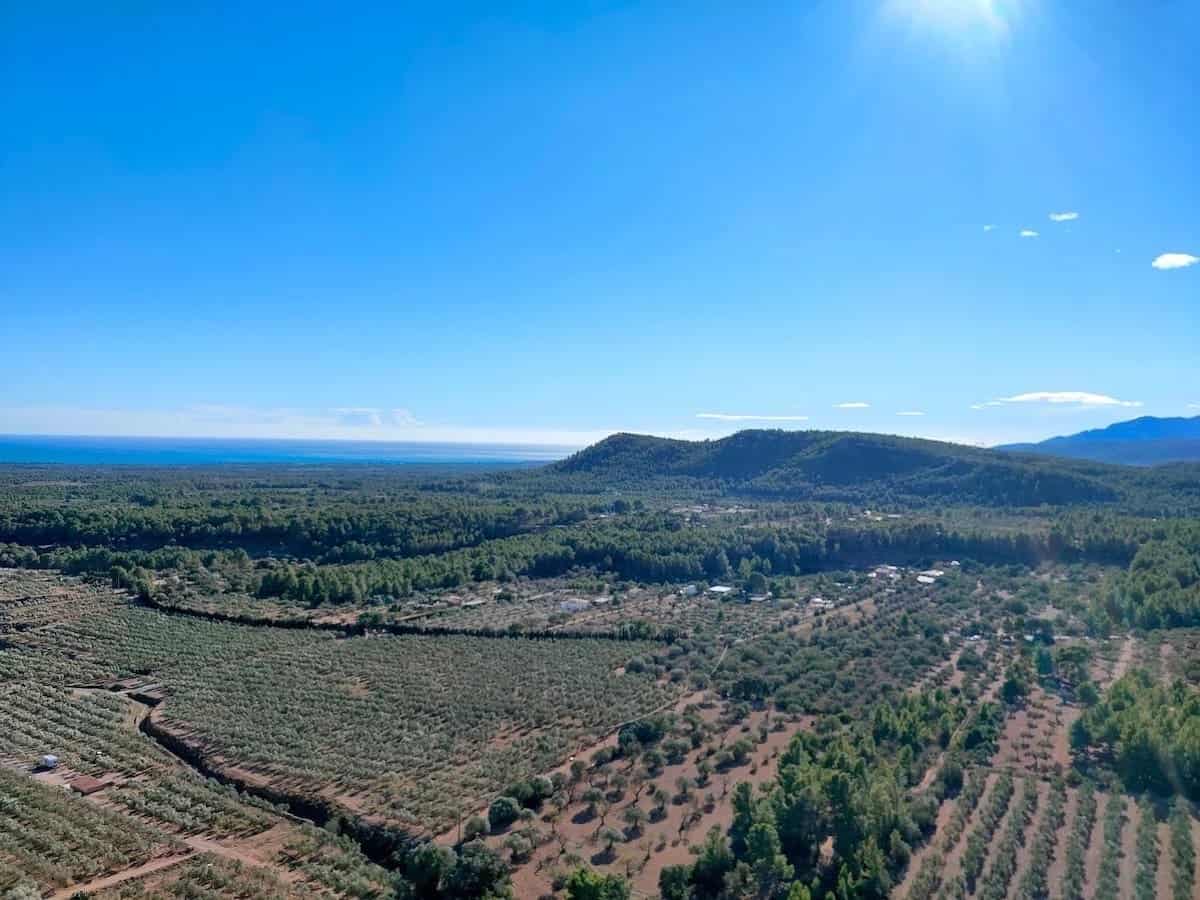
Ready to continue exploring? Let’s keep hiking! Now comes the fun part.
It’s time to leave the church behind and ascend to La Cova Foradada, a beautiful cave with otherworldly wall patterns.
After admiring its beauty, you’ll keep going until you find the hike’s next highlight: Escales del Diable.
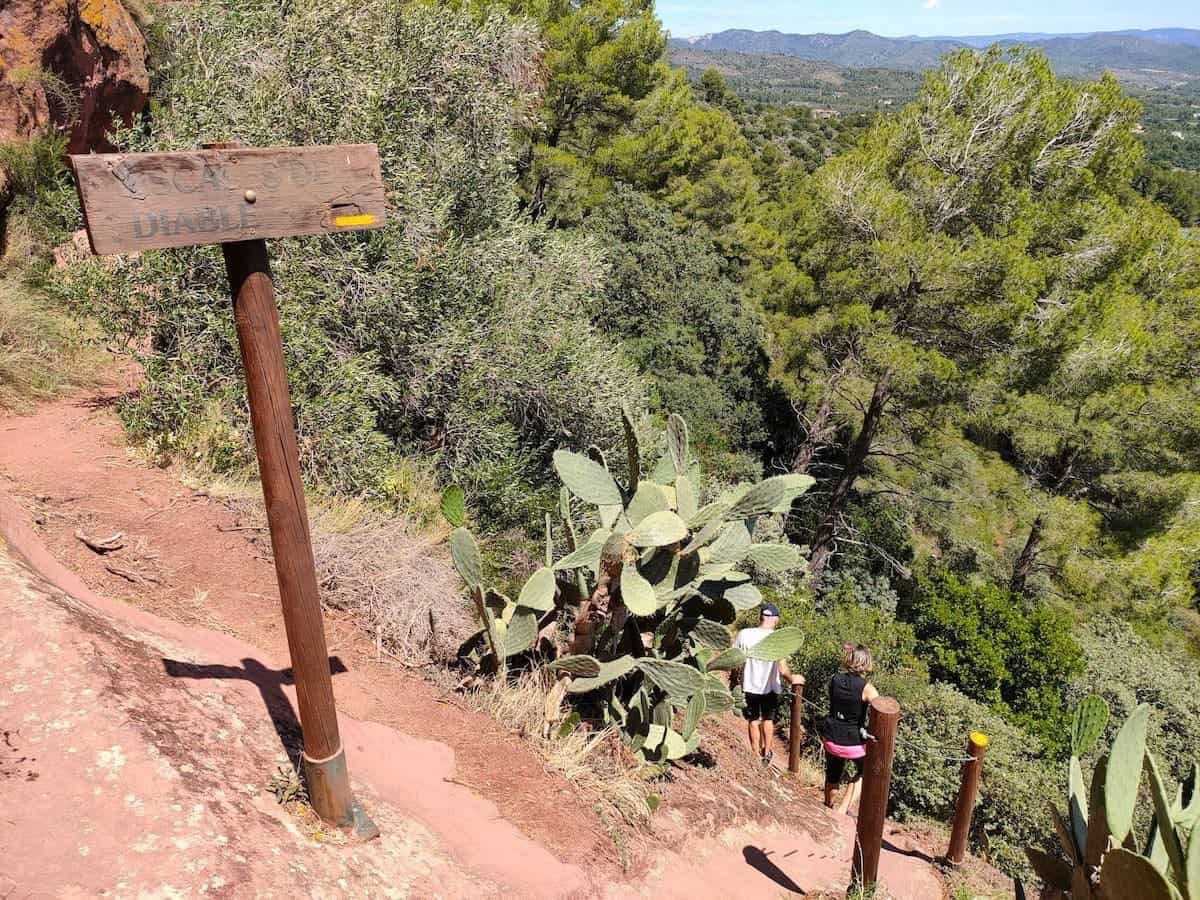
After descending the stairs, it’s time to climb again! But this time more gently. On this part of the hike, you’ll find several ropes on the rock that will make the ascent easier.
Get ready to stumble across several caves and arches along the way, each one more impressive than the one before. The red of the rocks here contrasts with the green vegetation and the blue waters of the sea on the horizon. It’s stunning!
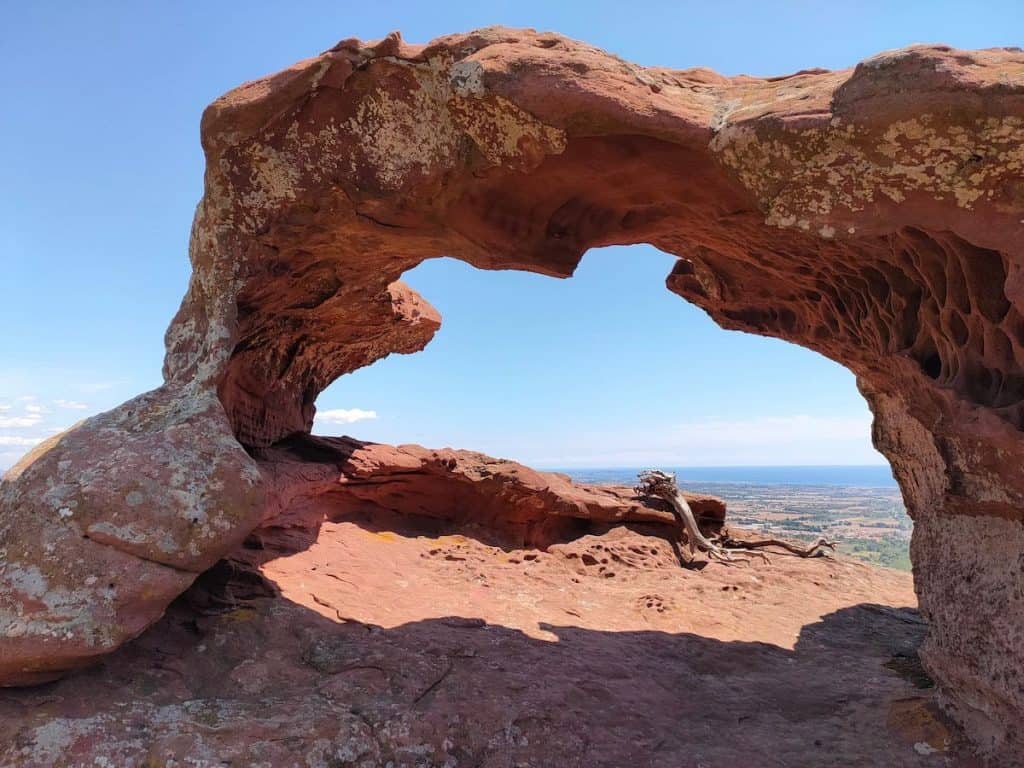
Finally, the hike descends until crossing again with the path you took to get to the Mare de Déu de la Roca. Instead of going back to Mont-Roig del Camp through the ravine, you’ll follow a faster trail that unwinds through olive tree plantations until finally reaching the village.
To get a better sense of the whole itinerary, you can check the route on our Wikiloc page.
Lunch day 2 🍽
Hungry already? No worries, the hike ends close to Cal Xato, where you can enjoy a wonderful lunch!
Recharge your batteries with a pizza, share some tapas, or try typical Catalan dishes such as botifarra amb mongetes, gazpacho, or mandonguilles amb sèpia.
Here ends our suggested itinerary. Time to continue your trip to other parts of Catalonia, go back to Barcelona or keep enjoying the Costa Daurada for some more days. Whatever your decision, we hope you have a great time!
If you follow this itinerary, we’d love you to leave a comment and let us know how your experience was.

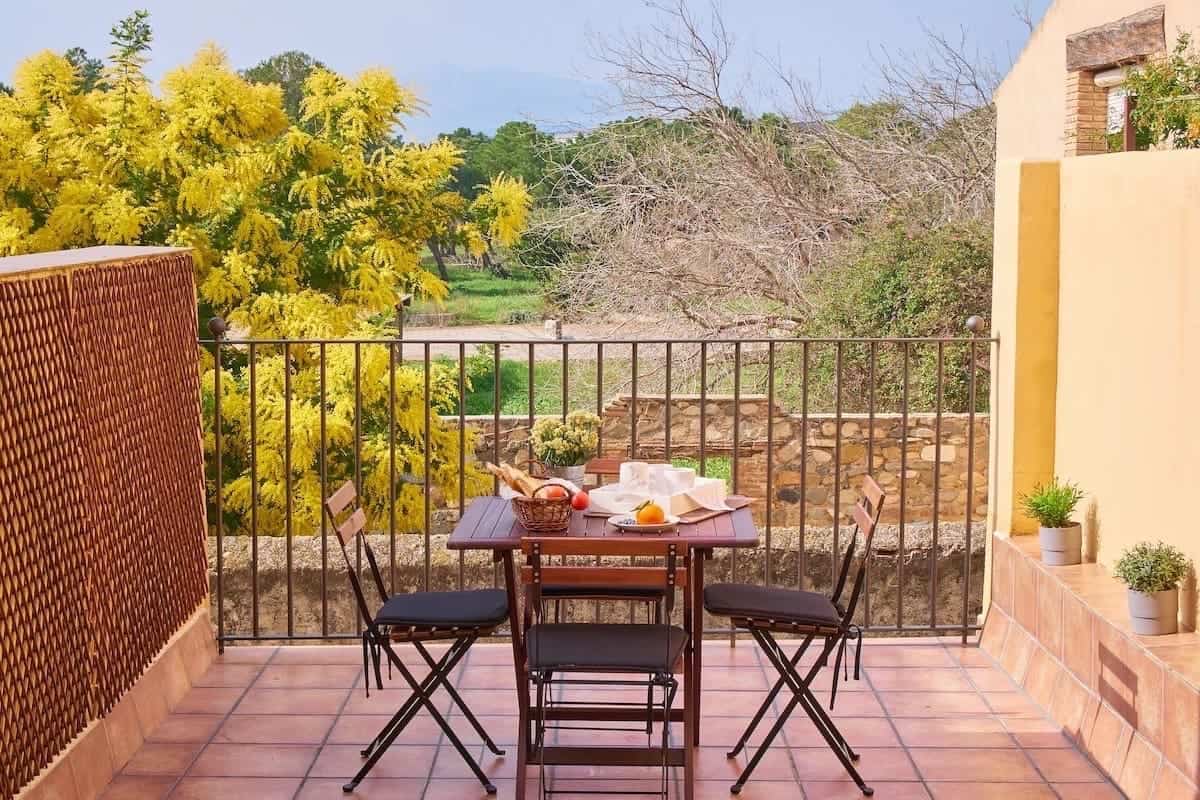
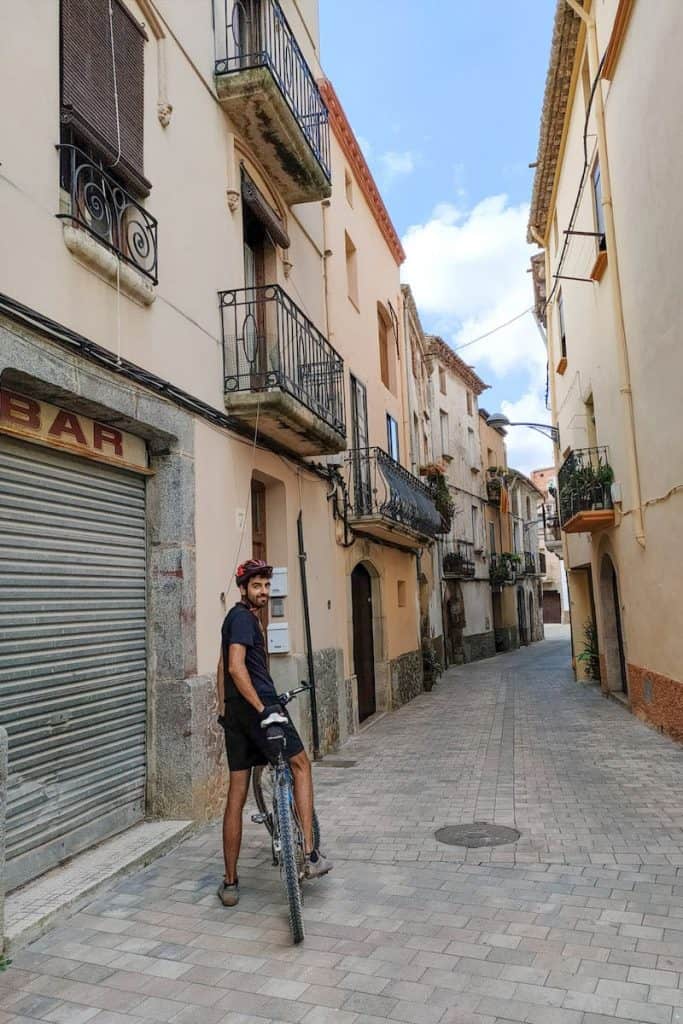
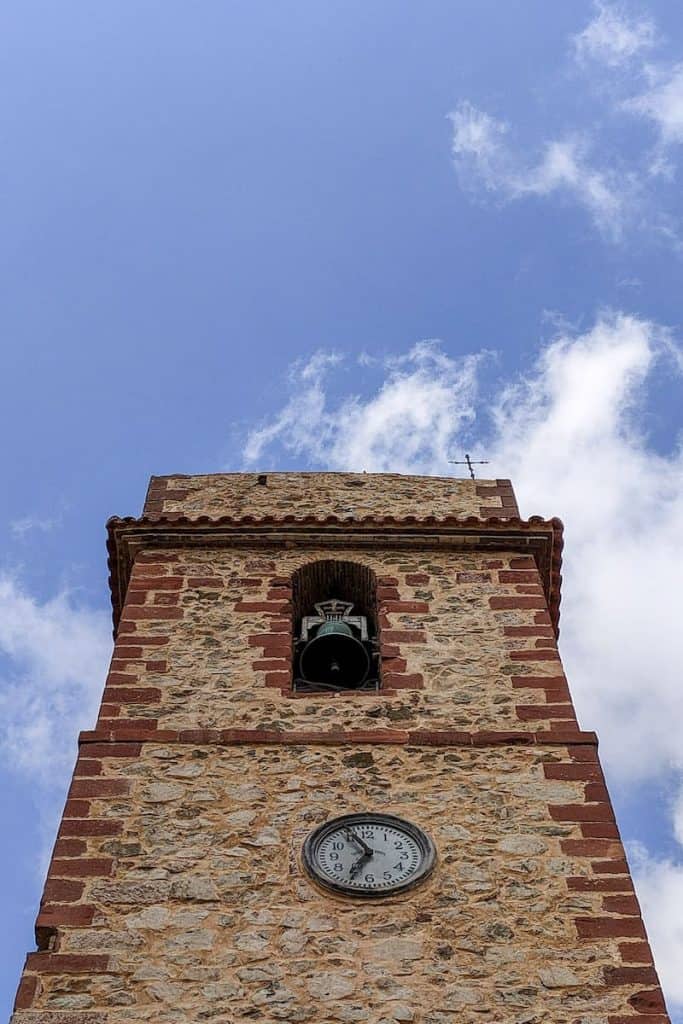
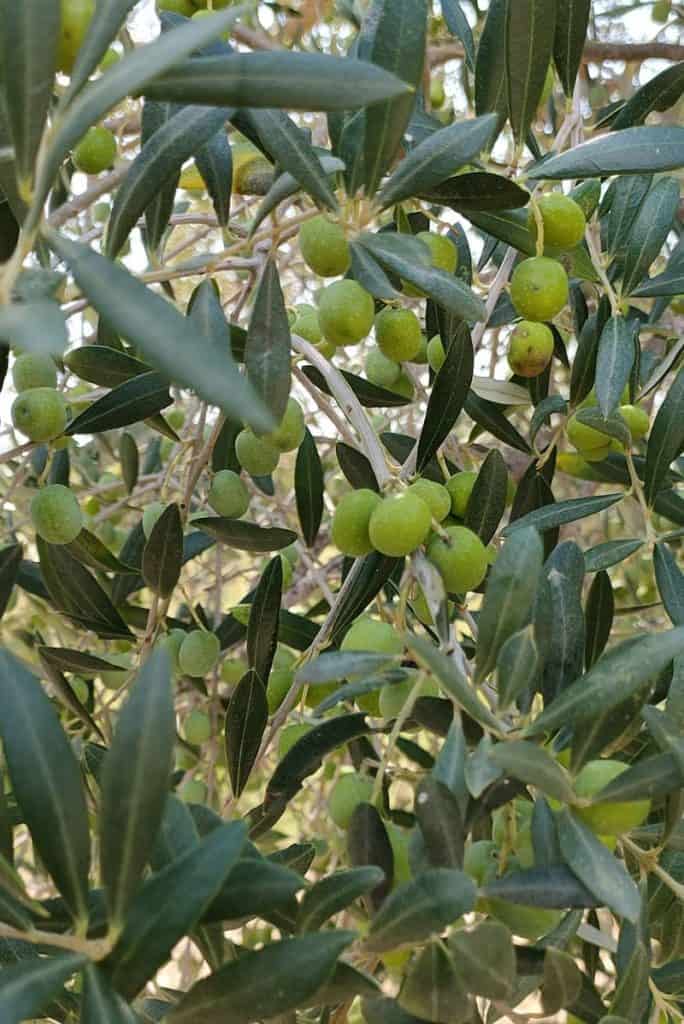
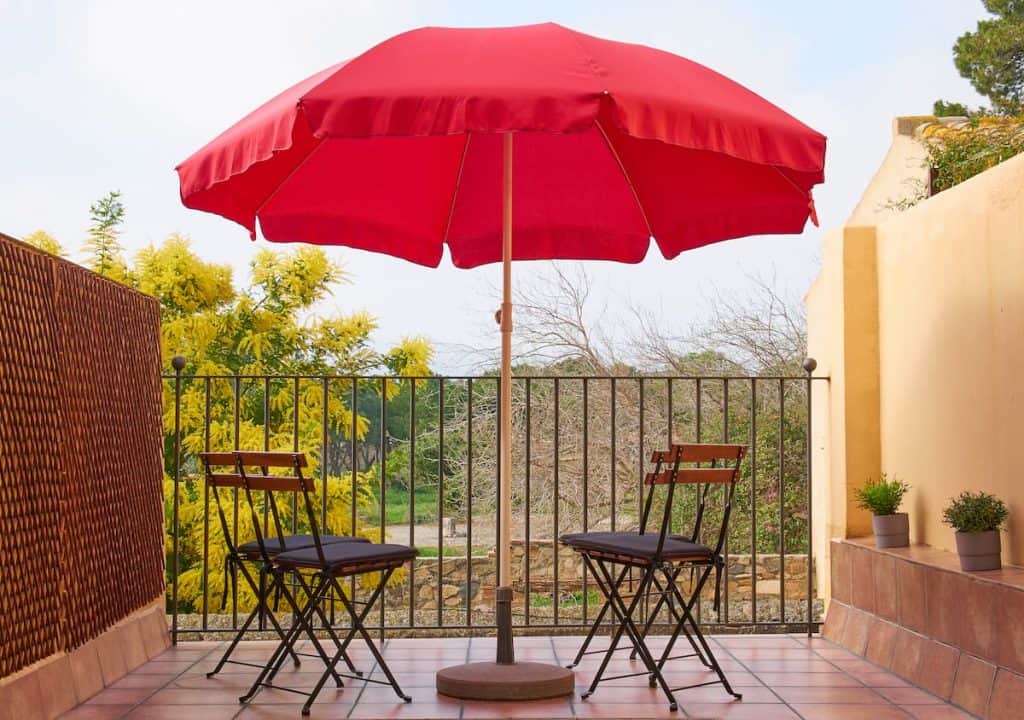
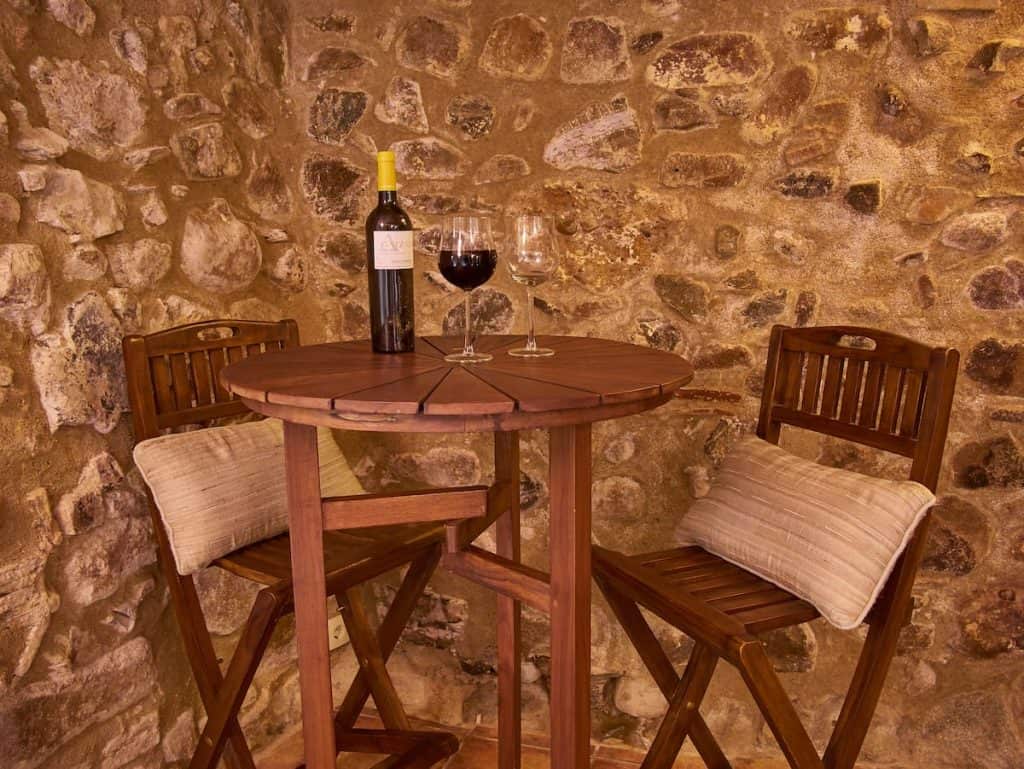
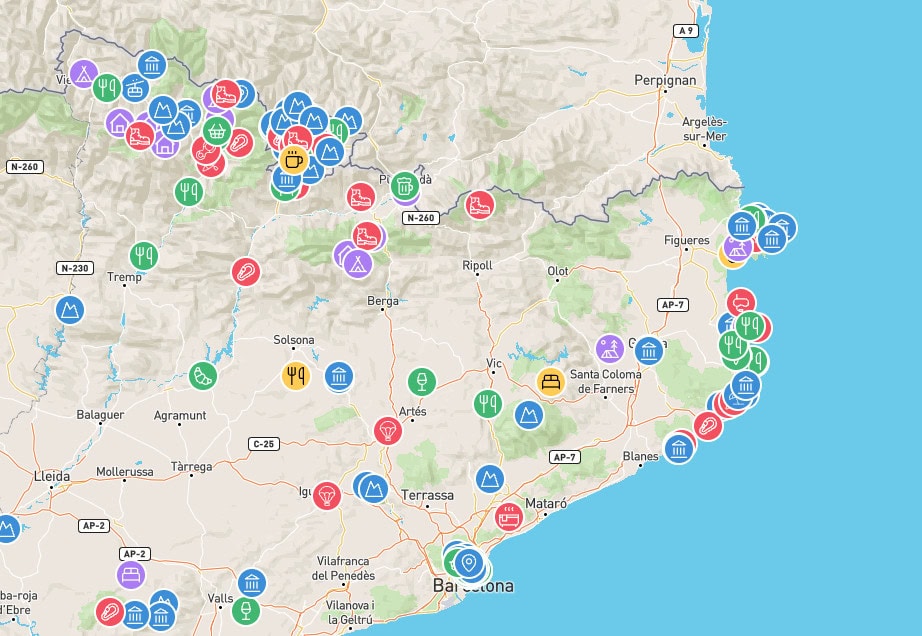
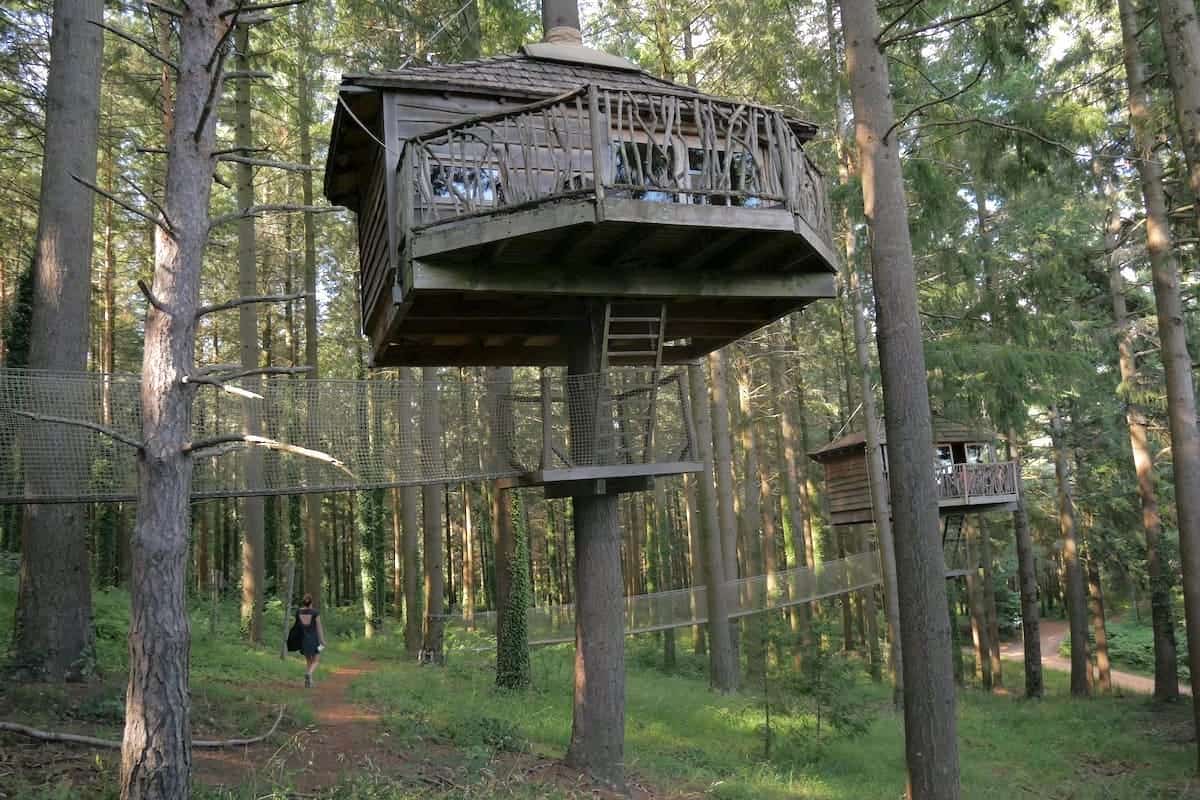
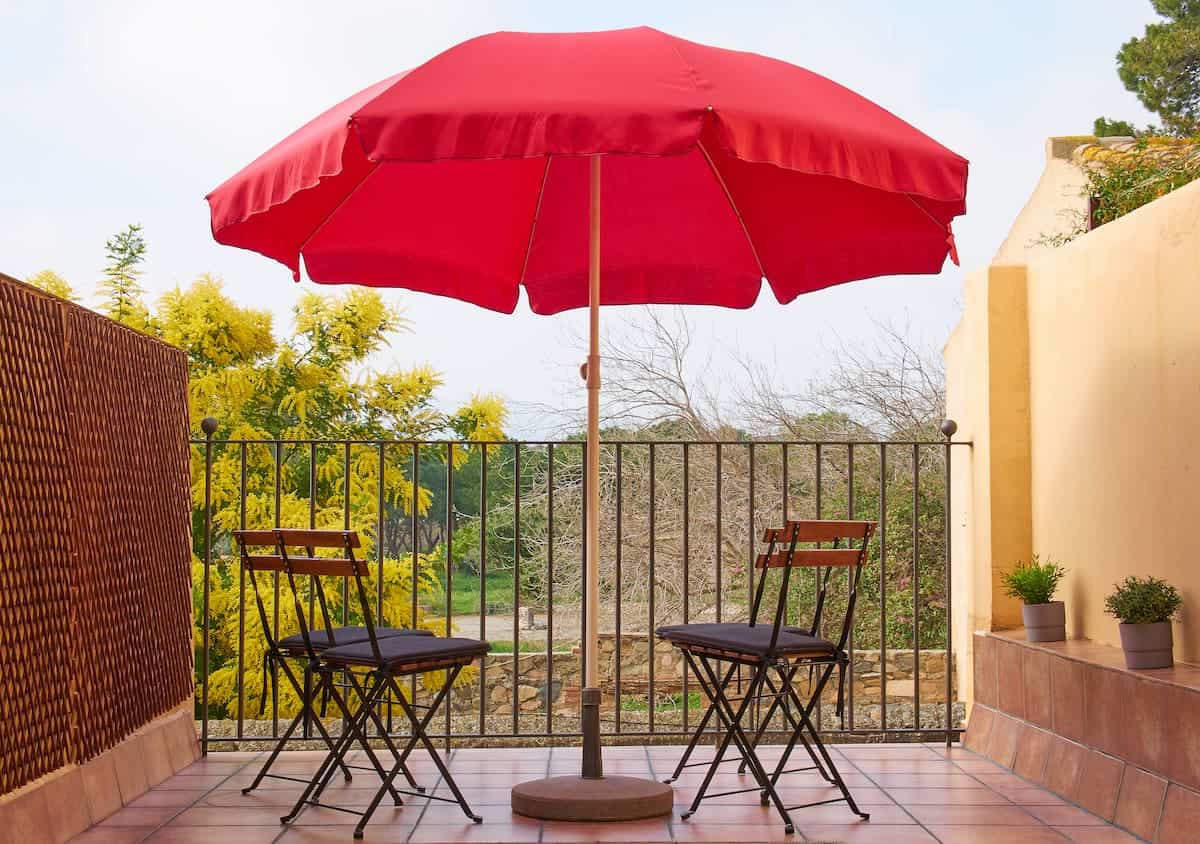
0 Comments